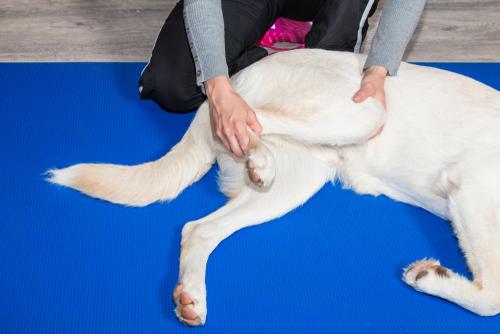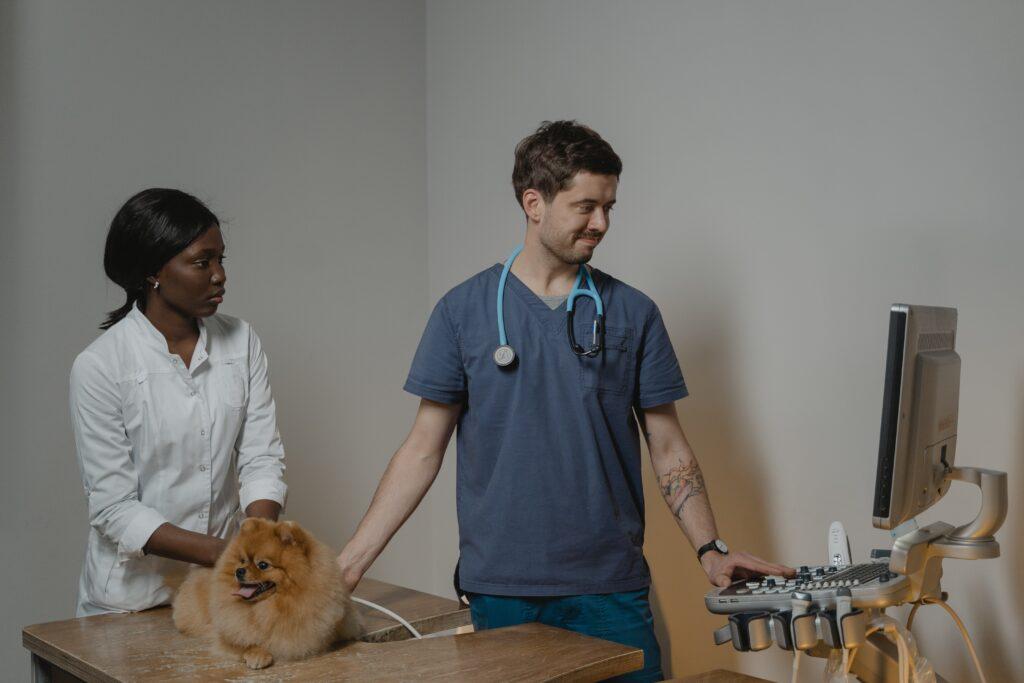Rehabilitation therapy, also known as physical therapy or physiotherapy for dogs, offers a wide range of benefits that can significantly improve their overall health, mobility, and quality of life. It is especially beneficial for dogs recovering from injuries, surgeries, or managing chronic conditions.

Rehabilitation therapy for dogs is typically provided by licensed veterinary professionals, such as certified canine rehabilitation therapists (CCRT) or veterinarians with specialized training in physical therapy. If you believe your dog could benefit from rehabilitation therapy, consult with your veterinarian to discuss the best options for your dog’s specific condition and needs.
If you are interested in a Posh Dog Knee Brace visit our store page to purchase and if you need more information or would like to keep up to date on new things with Posh Dog Knee Brace visit our Facebook page.
Hey guys, today let’s talk about what to bring to your vet visit, whether it is the first time bringing your dog in for an injury, or for a second opinion. I suggest that you first think back to when the injury happened. Write down notes about the injury, things that can help your veterinarian correctly diagnose the injury. I don’t know how many times, myself or one of my technicians, has had a patient come to us that purchased a knee brace, and after a few questions we find it is not the dog’s knee that was the issue.

So, it is very important to tell your vet the details. Did your dog slip on the floor? Did they do the splits when they fell? If they slipped on ice, again, did they possibly fall with both back legs or one bent behind them? These are very important to tell your vet, so that he or she can correctly assess the injury. Here is a scenario that we just had occur. The patient had actually slipped, and done the splits. The dog began holding up a hind leg, and would not weight bear.
They thought there may have been a positive drawer test (see that blog if you are unsure what a drawer test is), and diagnosed the dog with a CCL/ACL tear. The owner did not know to tell their vet that the dog had in fact done the splits, which actually had caused a groin sprain and made the hip sore. Note: This can happen, and will show the same signs as a dog that has a CCL tear.
We recommended they go back to the vet immediately, once we realized what happened, and they were correctly diagnosed with a groin sprain, and the patient recovered after several week of rest. Had we braced this patient, the brace would have put pressure on the groin area, causing further distress.
It is also important to note if your dog is using the ankle properly. Ankle injuries and knee injuries can also look the same to an owner. Does your dog normally walk low on the hocks? Does he occasionally knuckle, or drag their toes on the floor? These can indicate neurological issues, and should be told to your Veterinarian, as you may need a hock brace, as well as a knee brace, or just an ankle brace depending on the injury.
With Covid changing how many clinics do exams, resulting in patients being taken into the clinic without their owners, it is even more important to take notes, and give those to your veterinarian. Most dogs, when in clinic, mask pain and do not show the vet the same signs as at home with owners. Just like my car is perfect for the mechanic, but with me acts up😊
So, note taking is important, and it is all in the small details. Please help your veterinarian out, as it has been a difficult time for all of us, and having all of the information will make things much smoother for you and your fur baby. And as always, feel free to check out our site, poshdogkneebrace.com, or send me an email at poshintake1@gmail.com or visit our Facebook Page we look forward for any questions you may have.
If you are interested in purchasing a Posh Dog Knee Brace please visit our store page, if you are looking for our FAQ’s please visit our FAQ’s page. Thank you for reading our article.
Read reviews check out our Google Reviews online. Click Here